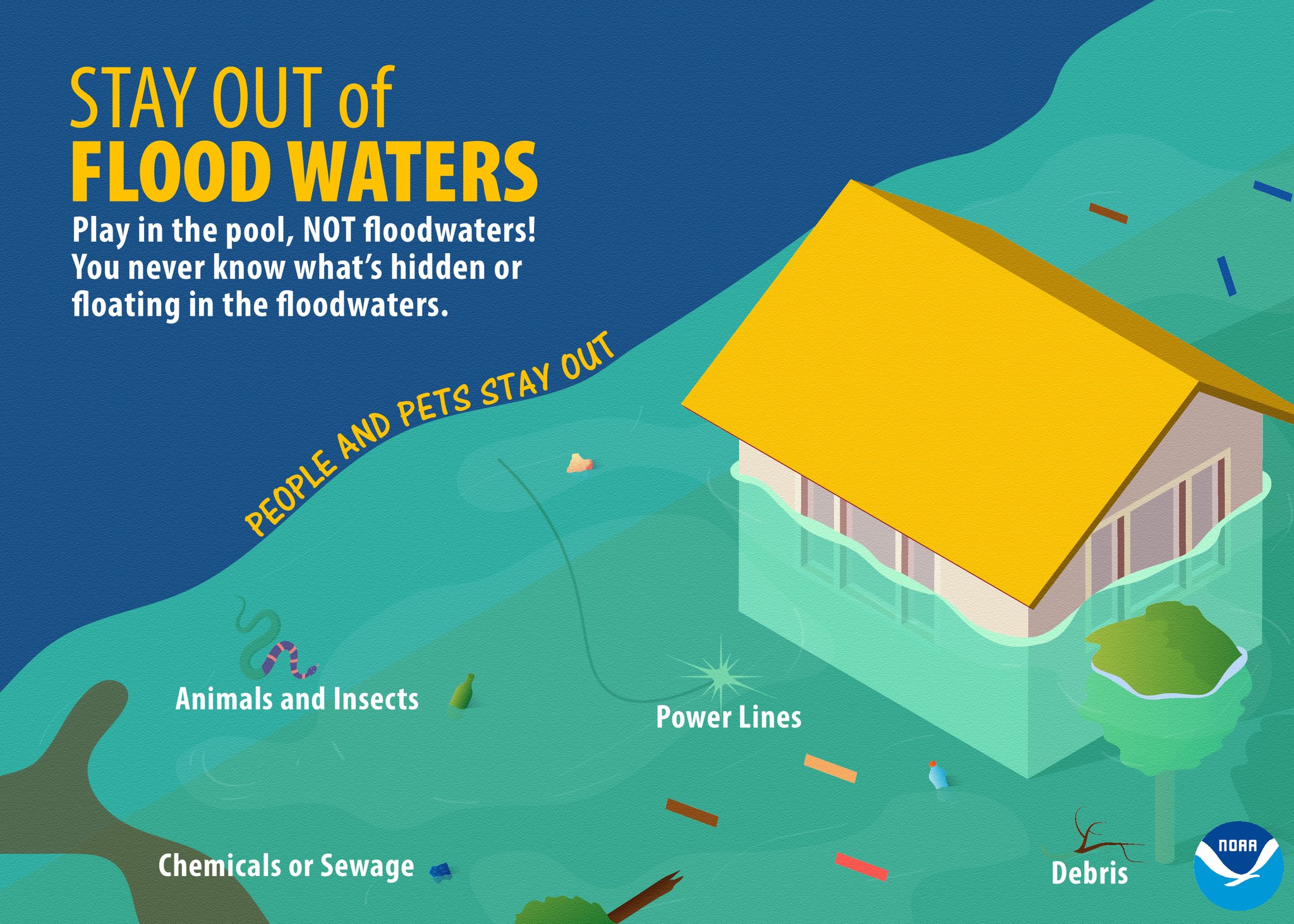How Flood Alerts Work And What You Need To Know

Table of Contents
How Flood Alert Systems Work
Flood alert systems rely on a sophisticated network of technologies to monitor weather patterns and water levels, providing timely warnings of impending floods. These systems use a combination of:
- Weather radar: Tracks precipitation intensity and location to predict potential rainfall accumulation.
- River gauges: Continuously measure river levels at various points along waterways, detecting rising water levels that could indicate flooding.
- Rainfall monitoring: Networks of rain gauges across a region collect data on rainfall amounts, providing crucial information for hydrological models.
- Hydrological models: Sophisticated computer models integrate data from weather radar, river gauges, and rainfall monitoring to simulate water flow and predict flood risk.
Role of Weather Agencies
National meteorological services and other government agencies play a pivotal role in the flood warning process. They collect and analyze the data from the technologies mentioned above, interpret the information to assess flood risk, and issue warnings to the public.
-
Specific Agencies and Systems: In the US, the National Oceanic and Atmospheric Administration (NOAA) and the National Weather Service (NWS) are key players, utilizing the Advanced Hydrologic Prediction Service (AHPS). In the UK, the Met Office provides flood warnings in collaboration with the Environment Agency. Many other countries have similar organizations.
-
Alert Levels: Most agencies use a tiered alert system to convey the urgency of the situation. These levels typically include:
- Watch: Conditions are favorable for flooding; monitor the situation closely.
- Warning: Flooding is imminent or occurring; take immediate action.
- Advisory: Minor flooding is possible; be aware of potential hazards.
Dissemination of Flood Alerts
Once a flood warning is issued, it's crucial to disseminate the information quickly and effectively. Various methods are employed:
-
Mobile phone alerts: Emergency alert systems (like Wireless Emergency Alerts or similar systems) send urgent notifications directly to cell phones within affected areas. This is often considered the fastest and most effective method for reaching a wide audience.
-
Radio broadcasts: Weather reports on radio stations provide timely updates and warnings.
-
Television news: Television broadcasts, especially news channels, provide visual representations of the situation, along with detailed information about flood alerts and safety measures.
-
Website notifications: Many government agencies and news websites provide real-time flood information and alerts via their websites.
-
Social Media: Agencies frequently use social media platforms to disseminate information and engage with the public during flood events.
-
Community sirens: Outdoor sirens warn residents of immediate dangers, including flash floods.
The effectiveness of each method varies based on factors such as accessibility, geographic reach, and individual awareness. Registering for specific alert systems through government websites or dedicated apps ensures timely notifications.
Types of Flood Alerts
Flood alerts are categorized based on the type of flooding, impacting the urgency and preparation needed.
Flash Flood Warnings
Flash floods are characterized by a rapid and sudden rise in water levels, often with little to no warning. These alerts are extremely urgent:
- Rapid Onset: Flash floods can develop in minutes, leaving very little time for response.
- Immediate Action: When a flash flood warning is issued, immediate action is crucial—seek higher ground or evacuate immediately.
River Flood Warnings
River floods are usually associated with prolonged periods of heavy rainfall, causing rivers to overflow their banks. These alerts often provide more lead time, allowing for more thorough preparation:
-
Contributing Factors: Prolonged rainfall, snowmelt, dam failures, and coastal storm surges can all contribute to river flooding.
-
Warning Information: River flood warnings typically specify the affected areas, predicted flood levels, and the expected timing of the flood. This allows residents to take preemptive measures, such as moving valuables to higher floors or evacuating if necessary.
What to Do When You Receive a Flood Alert
Your response depends on the type of flood alert:
Immediate Actions
-
Move to higher ground: This is the most important action during a flash flood. Seek higher ground immediately, and do not attempt to cross flowing water.
-
Evacuate if necessary: Follow official evacuation orders promptly. Do not delay evacuation.
-
Secure your property: Move valuable items to higher floors or secure them outdoors to prevent them from being swept away.
-
Contact emergency services: Report flooding and any injuries or emergencies to local authorities.
-
Evacuation Checklist:
- Important documents (identification, insurance papers)
- Medications
- First-aid kit
- Food and water
- Extra clothing
- Emergency contact information
Preparatory Actions
-
Family emergency plan: Develop a comprehensive plan outlining evacuation routes, communication strategies, and meeting points.
-
Emergency kit: Assemble a well-stocked kit containing food, water, medications, flashlights, batteries, blankets, and other essentials.
-
Flood insurance: Consider purchasing flood insurance, even if you don't live in a high-risk area. Standard homeowner's insurance policies typically don't cover flood damage.
Understanding Flood Risks in Your Area
Knowing your flood risk is essential for effective preparedness.
Utilizing Online Resources
Many government agencies and organizations provide online tools and resources to assess flood risk and sign up for alerts.
-
Online Flood Maps: Check flood risk maps and find out which areas are prone to flooding. Examples include [insert links to relevant government websites and flood map resources for your target region].
-
Alert Registration: Register for flood alerts through official websites and apps. [Insert links to relevant websites and apps for alert registration in your target region].
Community Preparedness
Active participation in community flood preparedness initiatives is vital:
-
Participate in drills: Familiarize yourself with evacuation procedures and emergency response plans by participating in community drills and exercises.
-
Volunteer: Support your local community by volunteering for flood relief efforts or participating in flood preparedness programs.
-
Attend informational sessions: Attend community meetings and informational sessions to learn about flood risks and safety measures.
Conclusion
Flood alerts are a critical component of flood safety, utilizing advanced technologies and collaborative efforts to warn communities of impending danger. Understanding the different types of alerts, how they are issued, and the actions to take in response are vital steps in mitigating flood risks. By proactively preparing and responding to flood alerts, you significantly increase your chances of protecting your life and property. Protect your family and home with timely flood alerts. Don't get caught off guard – sign up for flood warnings today!

Featured Posts
-
 Enquete Sur Le Nouveau Siege De La Rtbf La Ministre Galant Exige La Transparence
May 26, 2025
Enquete Sur Le Nouveau Siege De La Rtbf La Ministre Galant Exige La Transparence
May 26, 2025 -
 Update Klasemen Moto Gp Marc Marquez Menangkan Sprint Race Di Argentina 2025
May 26, 2025
Update Klasemen Moto Gp Marc Marquez Menangkan Sprint Race Di Argentina 2025
May 26, 2025 -
 Zheng Qinwens Italian Open Semifinal Run A Breakthrough Performance
May 26, 2025
Zheng Qinwens Italian Open Semifinal Run A Breakthrough Performance
May 26, 2025 -
 Paris Roubaix Results Van Der Poel Third Pogacar Distant
May 26, 2025
Paris Roubaix Results Van Der Poel Third Pogacar Distant
May 26, 2025 -
 Hugo De Waha Laureat De La Bourse Payot Pour Jeunes Journalistes
May 26, 2025
Hugo De Waha Laureat De La Bourse Payot Pour Jeunes Journalistes
May 26, 2025
